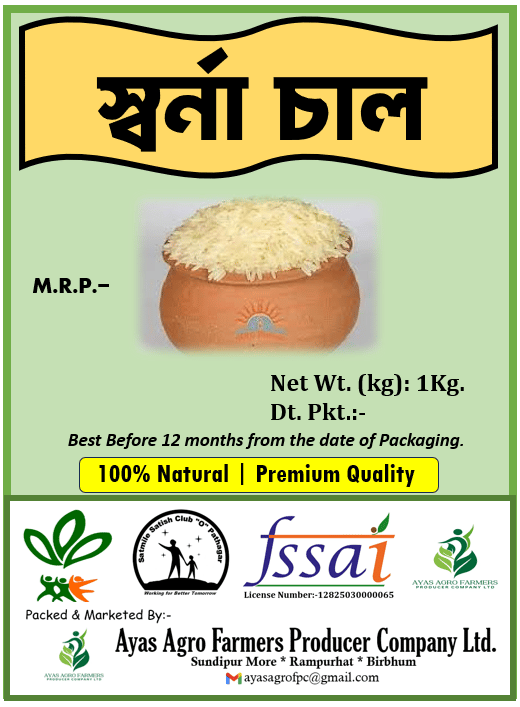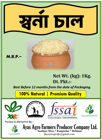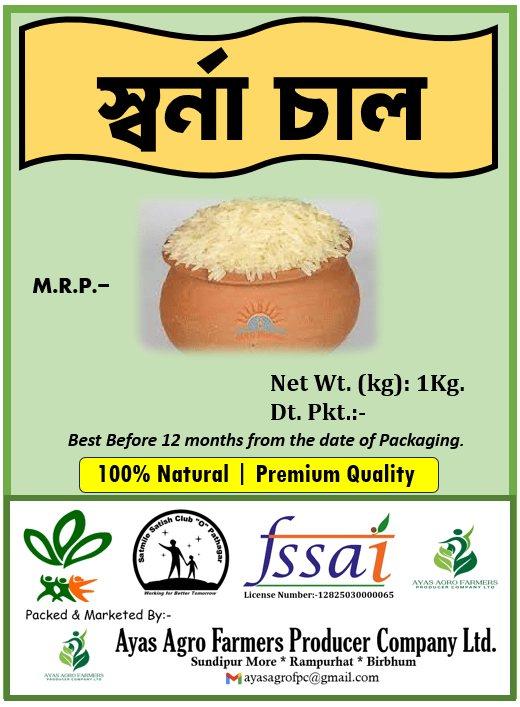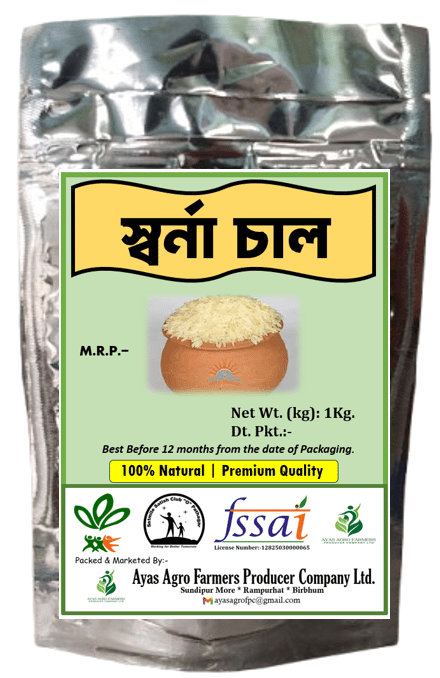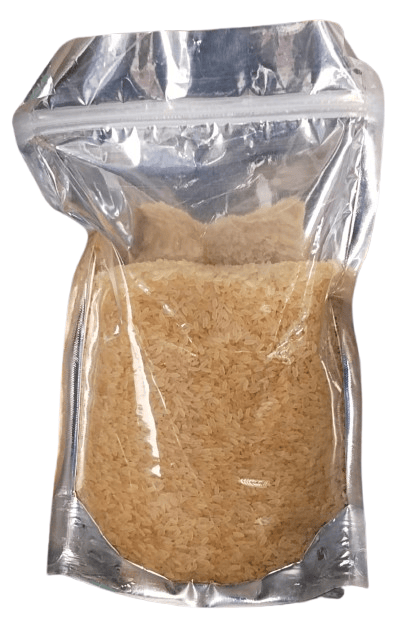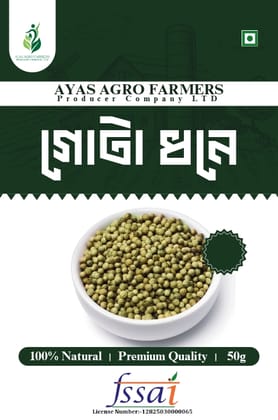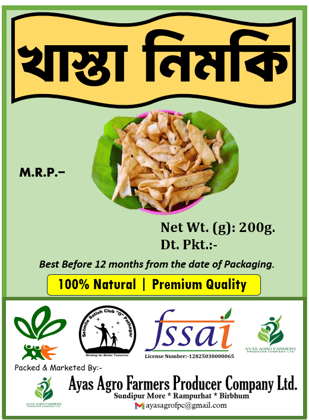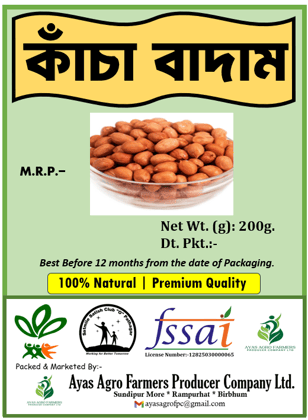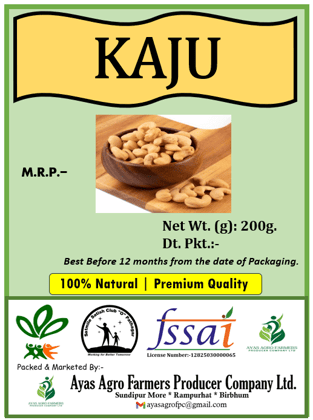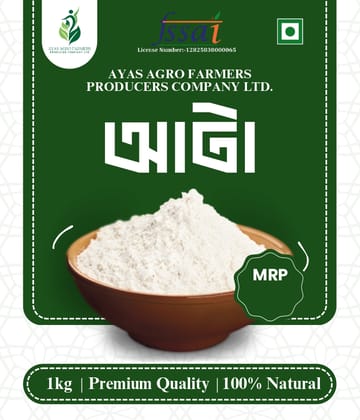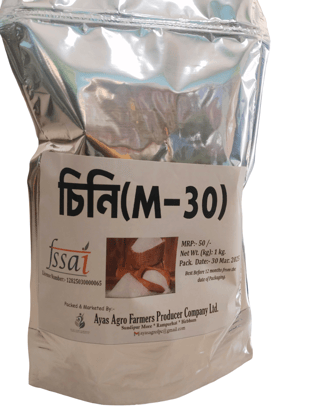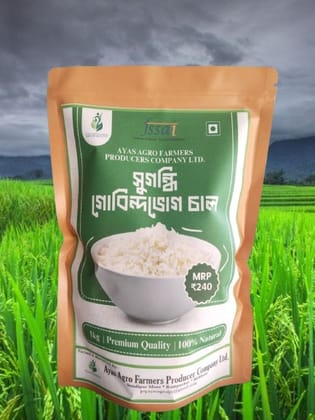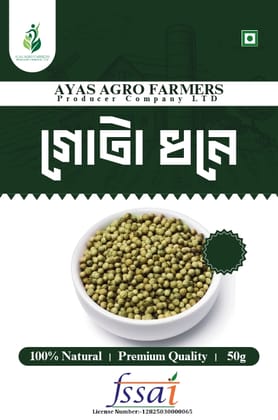Swarna Rice is a very popular and widely consumed rice variety in India, part...
Premium Swarna Rice- 1 Kg
Key Attributes
| Country of origin | India |
|---|---|
| Brand | Ayas Agro Farmers Producer Company Limited |
| Net Quantity | 1 kilogram |
| Product Dimensions | 24L x 18W x 24H cm |
| Manufacturer or packer name | Ayas Agro Farmers Producer Company Limited |
Swarna Rice is a very popular and widely consumed rice variety in India, particularly in the eastern and southern states like West Bengal (where you are), Andhra Pradesh, Telangana, Bihar, and Assam. It's known for being a staple in many households due to its versatility and suitability for everyday cooking.
Here's a detailed description of Swarna Rice:
Key Characteristics:
Grain Size and Appearance:
Swarna is typically classified as a medium-grain rice.
2 Its average grain length is usually between 5.0 mm and 5.75 mm.The grains are generally short and plump compared to long-grain varieties like Basmati.
3 It's most commonly available as white rice (polished), but you can also find parboiled Swarna rice (which undergoes a partial boiling process with the husk on, making it firmer and more nutritious) and brown Swarna rice (where only the outer husk is removed, retaining the bran and germ).
Texture After Cooking:
When cooked, Swarna rice is generally soft and non-sticky, making it pleasant for daily consumption with curries, dal, or other side dishes.
The parboiled variety tends to be firmer and less prone to sticking.
Aroma and Taste:
Swarna rice possesses a natural, mild aroma and a distinct, pleasant taste.
6 It's not as fragrant as Basmati or Gobindobhog, but its subtle aroma complements a wide range of dishes.
Digestibility:
It is generally considered easy to digest, making it a good choice for regular meals.
Cultivation:
Swarna is a high-yielding rice variety and is a significant crop in the regions where it's grown.
8 There are also submergence-tolerant varieties, like Swarna-Sub1, which are bred to withstand flooding, a common issue in some rice-growing areas.
Uses:
Swarna rice is incredibly versatile and is used in a vast array of Indian dishes:
Everyday Meals: It's a staple for daily consumption, served simply with curries, dal, vegetables, and gravies.
Pulao and Biryani: While Basmati is often preferred for its long grains and strong aroma in these dishes, Swarna can also be used, especially the longer or parboiled varieties, for a more budget-friendly or a different textural profile.
Fried Rice: Its non-sticky nature makes it suitable for preparing fried rice.
South Indian Cuisine: It's very popular in South Indian dishes like various rice-based preparations.
Other Preparations: Depending on its exact characteristics, it can also be used in dishes like Appam, Puttu, and Pongal.
Nutritional Information (Approximate per 100g of cooked white Swarna rice):
As with most white rice varieties, Swarna rice is primarily a source of carbohydrates.
Energy: Around 350-360 Kcal
Carbohydrates: 78-80g
Protein: 7-8g
Fat: 0.5-1g (very low in fat)
Fiber: Low (as it's refined white rice)
Vitamins & Minerals: Contains trace amounts of B vitamins and some minerals, though significant amounts are lost during the milling process for white rice. Parboiled Swarna rice retains more nutrients due to its processing method.
"Low Glycemic Index" Claim:
Some sources, including the International Rice Research Institute (IRRI), have highlighted that certain varieties of Swarna rice have a relatively low glycemic index (GI) compared to other common white rice varieties. This makes it a potentially better choice for individuals looking to manage blood sugar levels, including diabetics, though moderation is still key. The development of varieties like Swarna-Sub1 (a submergence-tolerant version) has also incorporated traits for different GI levels.
In summary, Swarna rice is a reliable, widely consumed, and adaptable rice variety known for its pleasant taste, non-sticky texture, and suitability for a wide range of everyday Indian culinary applications.
| Country of origin | India |
|---|---|
| Shelf Life | Refer To Label |
| Brand | Ayas Agro Farmers Producer Company Limited |
| Common name | Premium Swarna Rice |
| Net Quantity | 1 kilogram |
| Weight | 1000 g |
| Package Dimension | 24L x 18W x 24H cm |
| Product Dimensions | 24L x 18W x 24H cm |
| Manufacturer or packer name | Ayas Agro Farmers Producer Company Limited |
| Manufacturer or packer address | PLOT NO- 904 , KHATIYAN NO- 3227, JL NO- 079,,Rampurhat |
| Manufacturing Date | June |
| contact details consumer care | Ayas Agro Farmers Producer Company Limited, [email protected] |
